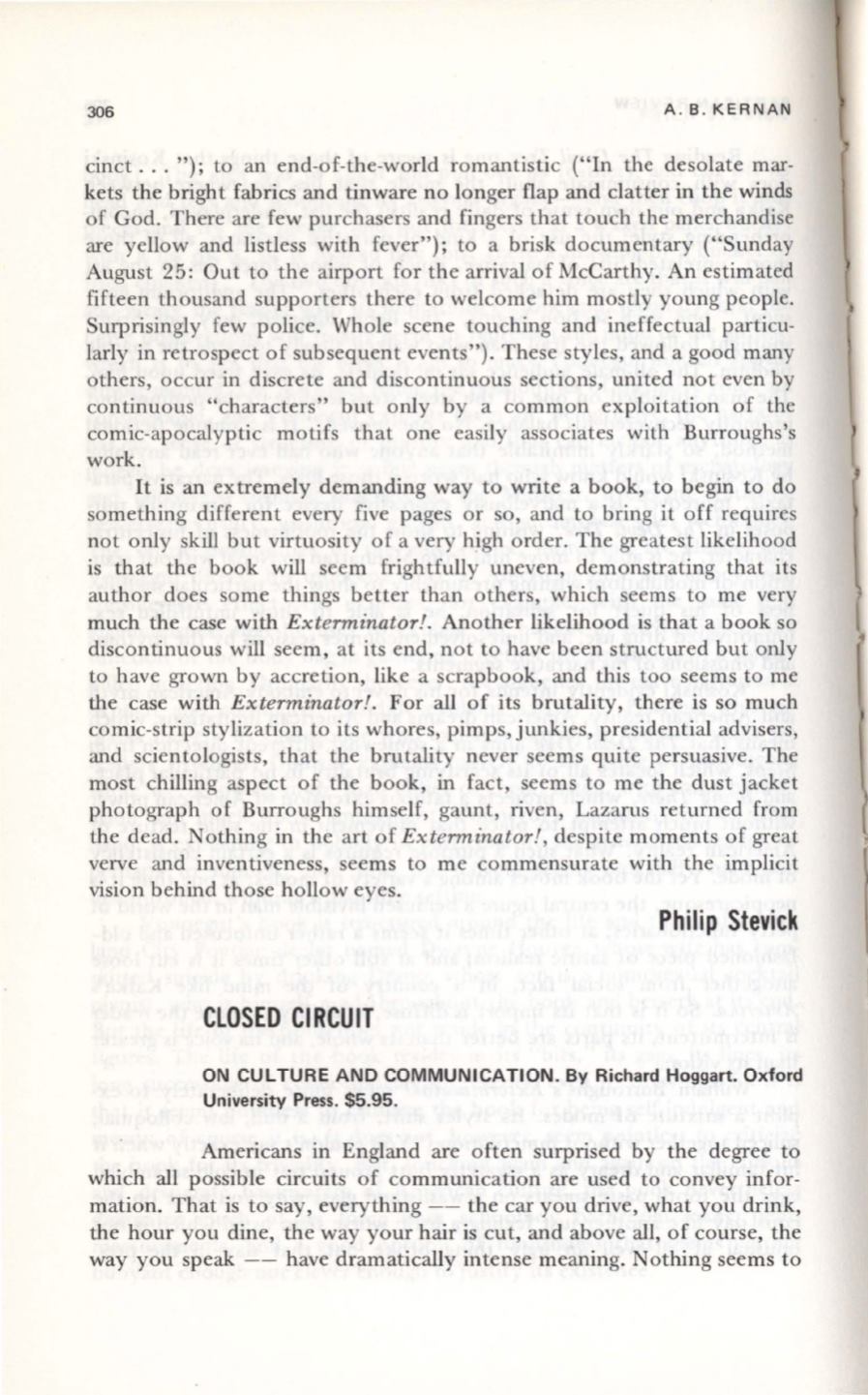
306
A . B. KERNAN
cinct ... ")
j
to an end-of-the-world romantlstlc ("In the desolate
mar–
kets the bright fabrics and tinware no longer flap and clatter in the winds
of God_ There are few purchasers and fingers that touch the merchandise
are yellow and listless with fever")
j
to a brisk documentary ("Sunday
August 25: Out to the airport for the arrival of McCarthy. An estimated
fifteen thousand supporters there to welcome him mostly young people.
Surprisingly few police. Whole scene touching and ineffectual particu–
larly in retrospect of subsequent events"). These styles, and a good many
others, occur in discrete and discontinuous sections, united not even by
continuous "characters" but only by a common exploitation of the
comic-apocalyptic motifs that one easily associates with Burroughs's
work.
It
is an extremely demanding way to write a book, to begin to do
something different every five pages or so, and to bring it off requires
not only skill but virtuosity of a very high order. The greatest likelihood
is that the book will seem frightfully uneven, demonstrating that its
author does some things better than others, which seems to me very
much the case with
Exterminator!.
Another likelihood is that a book so
discontinuous will seem, at its end, not to have been structured but only
to have grown by accretion, like a scrapbook, and this too seems to me
the case with
Exterminator!.
For
all
of its brutality, there is so much
comic-strip stylization to its whores, pimps, junkies, presidential advisers,
and scientologists, that the brutality never seems quite persuasive. The
most chilling aspect of the book, in fact, seems to me the dust jacket
photograph of Burroughs himself, gaunt, riven, Lazarus returned from
the dead. Nothing in the art of
Exterminator!,
despite moments of great
verve and inventiveness, seems to me commensurate with the implicit
vision behind those ho llow eyes.
Philip Stevick
CLOSED CI RCU IT
ON CULTURE AND COMMUNICATION.
By
Richard Hoggart. Oxford
University
Press. $5.95.
Americans in England are often surprised by the degree to
which all possible circuits of communication are used to convey infor–
mation. That is to say, everything -- t he car you drive, what you drink,
the hour you dine, the way your hair is cut, and above all, of course, the
way you speak -- have dramatically intense meani ng. Nothing seems to


